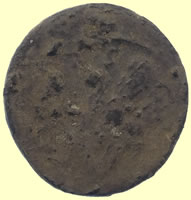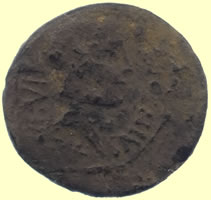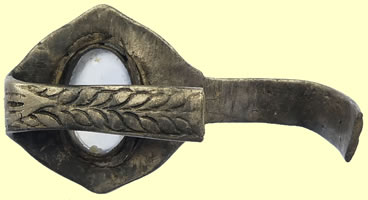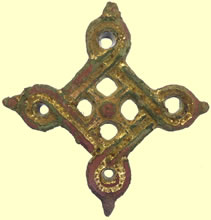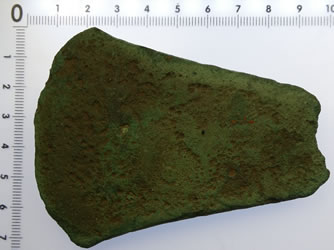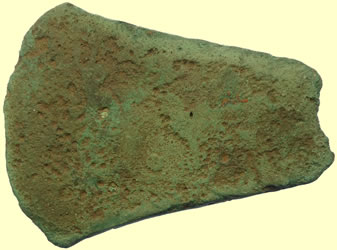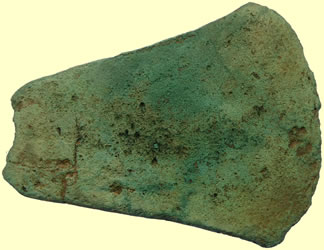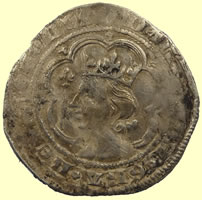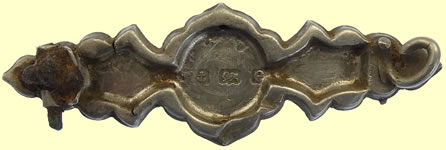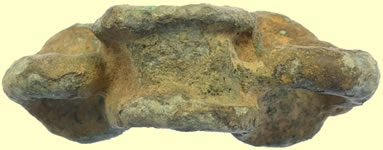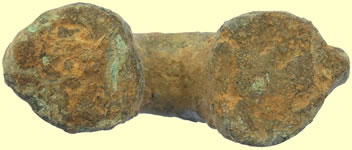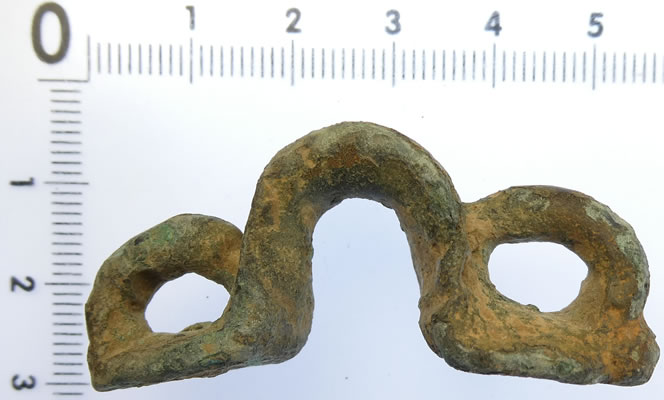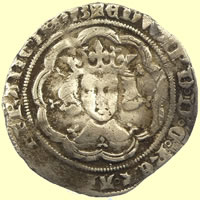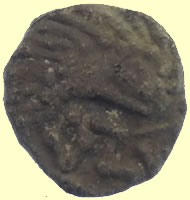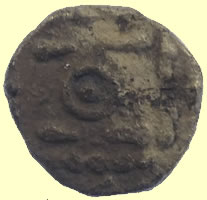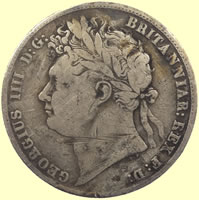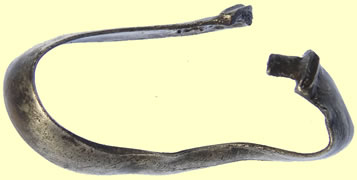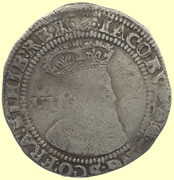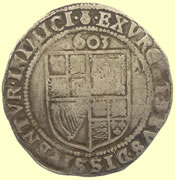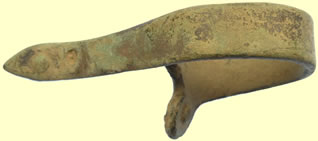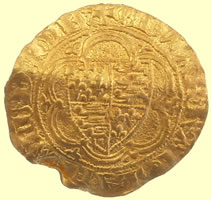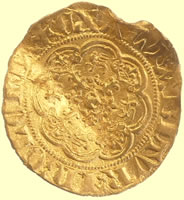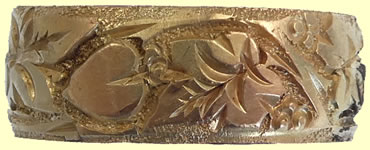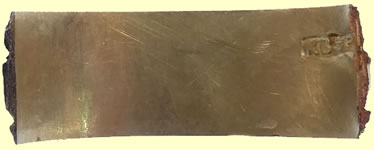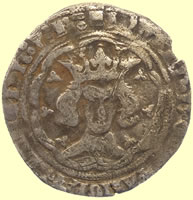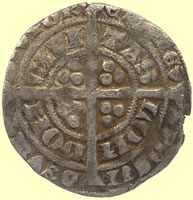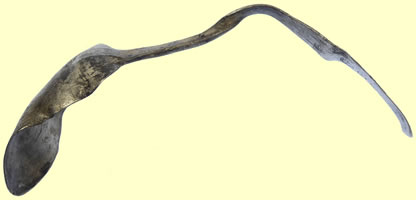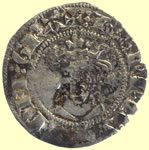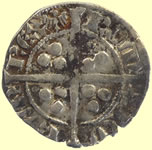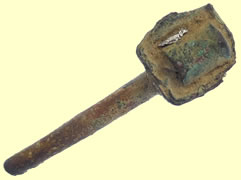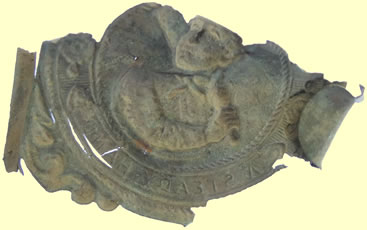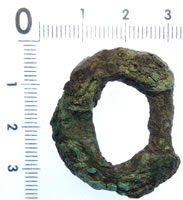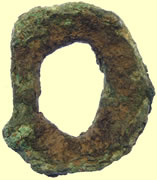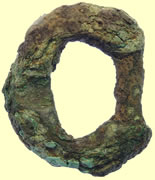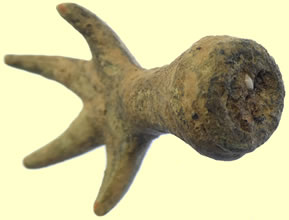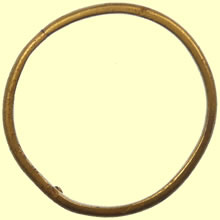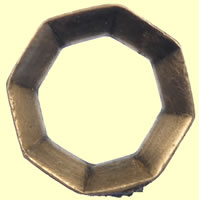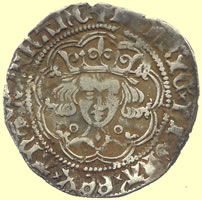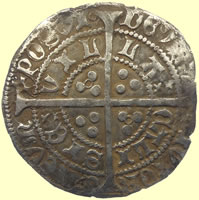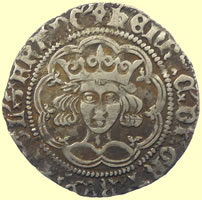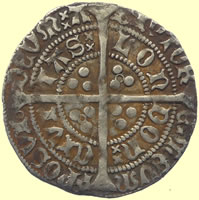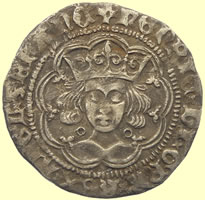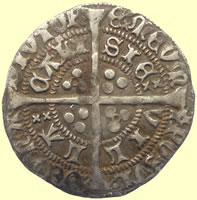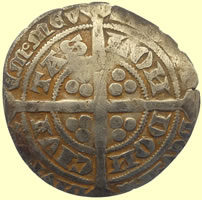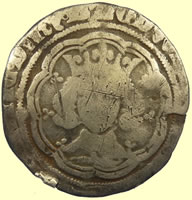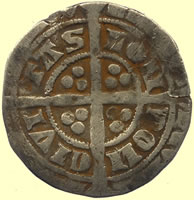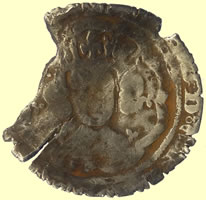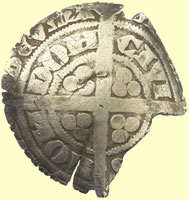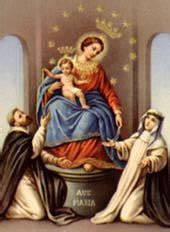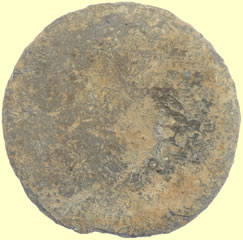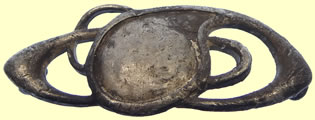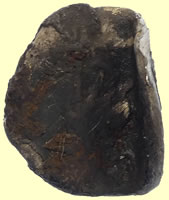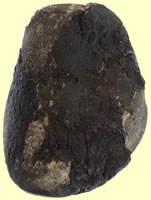

Metal detecting holidays in England with the World's most successful metal detecting club.20 years plus.
Twinned with Midwest Historical Research Society USA.
2020 March Finds page |
Crusty 50 BC Roman silver with unusual obverse - sent for ID
This is the closest I’ve been able to come. I truly wish I could discern more detail on the reverse, but this “match” seems plausible at least. The obverse is very close to a match, to the extent it can be seen. Gens: Sicinia, ca. 49/48 BC Q. Sicinius & C. Coponius
Would I bet my next social security check on this? – maybe not - but I think I got it pretty close seeing that we only had the obverse to go on, really, and much of that unclear as well. All the legible letters correspond to the legends on a clear specimen – the reverse is somewhat different, but these were all hand cut dies and so variety is the norm, within limits. I also suspect the reverse is double-struck about 25% to left on 2nd strike. You can see dotted border at 3:00-4:00 reverse, and I’m pretty sure the crescent you see inboard of that border from 5:00-6:00 is also a segment of border from a 2nd strike. The obverse is also just about exactly 25% off center to left Mark
|
|||||||||
Interesting silver ring with what looks like a rock crystal - 3.66g, 31mm long Inscribed 'JH 1521 The ring is inscribed from Henry VIII period - reported as treasure to museum.
|
|||||||||
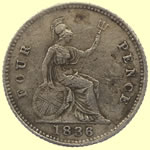  |
  |
||||||||
| 1836 William IV milled silver four pence | 1921 George V milled florin (24 prnce) | ||||||||
  |
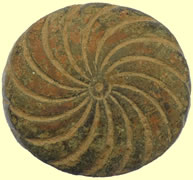 |
||||||||
| 1922 George milled shilling | 17thC belt slide | ||||||||
 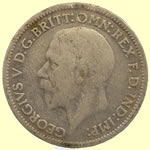 |
 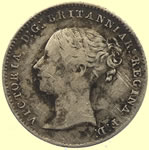 |
||||||||
| 1931 George milled six pence | 1856 Victoria milled silver three pence | ||||||||
  |
  |
||||||||
| 1247 Henry III hammered silver voided long cross half penny | Medieval gilded pendant | ||||||||
Medeival gilded mount |
|||||||||
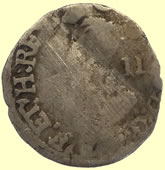 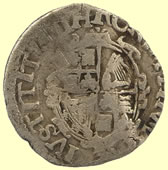 |
|||||||||
| 1624 Charles 1st hammered silver half half groat | |||||||||
2000 BC Early Bronze Age flat axe |
|||||||||
First ever Scottish groat we have found 1329-71 David II hammered silver groat Obv DAVID DEI GRA REX SCOTORUM Rev VILL/AED/INBV/RGH- Edinburgh mint |
|||||||||
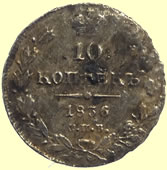 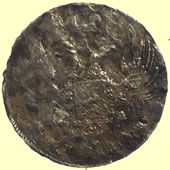 |
 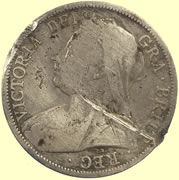 |
||||||||
| 1836 Russian milled silver 10 Kopeks | 1896 Victoria milled silver half crown (30 pence) | ||||||||
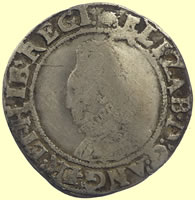  |
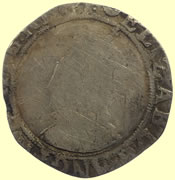  |
||||||||
| 1592-5 Elizabeth 1st hammered silver shilling - Tun mint mark | 1587-9 Elizabeth 1st hammered silver sixpence -Crescent mint mark | ||||||||
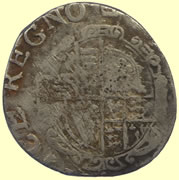 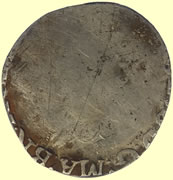 |
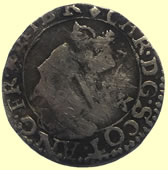 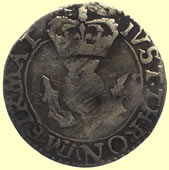 |
||||||||
| 1635-6 Charles 1st hammered silver sixpence - Crown mint mark | 1636 Scottish Charles 1st hammered silver twenty pence Obv CAR D G SCOT ANG FR & HIB FR - Briot's 2nd hammered issue Rev IUST THRONUM FIRMAT |
||||||||
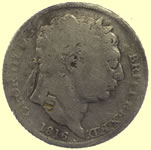 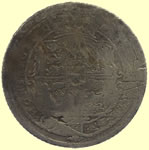 |
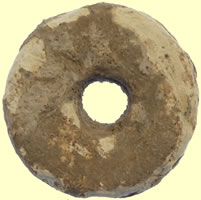 |
 |
|||||||
| 1816 George III milled silver sixpence | Medieval lead spindle whorl | 18thC Royal Artillery button | |||||||
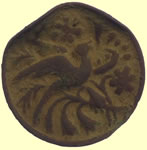 |
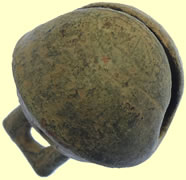 |
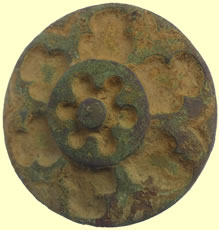 |
|||||||
| Georgian button | 18thC decorated crotal bell | Huge Georgian mount | |||||||
 |
 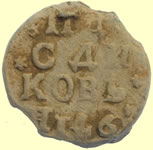 |
||||||||
| Georgian watch winders | 1837 Russian lead bale seal | ||||||||
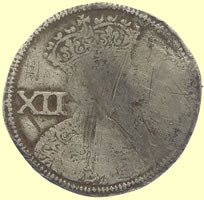 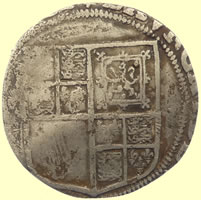 |
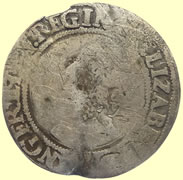 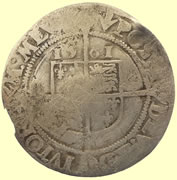 |
||||||||
| 1603 James 1st hammered silver shilling | 1561 Elizabeth 1st hammered silver sixpence - Pheon mint mark | ||||||||
1904 Birmingham mint - Rose gold brooch |
|||||||||
 |
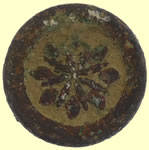 |
 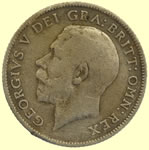 |
|||||||
| 1500-1700 mount | Georgian button | 1921 George V milled silver sixpence | |||||||
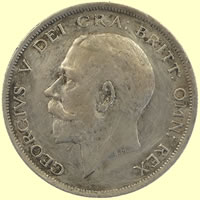  |
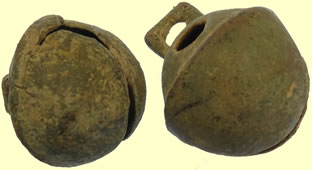 |
||||||||
| 1917 George V milled silver half crown (30 pence) | 18thC crotal bell | ||||||||
|
|||||||||
| First ever Romano/British double looped bronze protected terret I have seen | |||||||||
 |
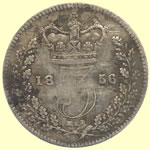  |
||||||||
| Large silver topped pen knife | 1856 Victoria milled silver three pence | ||||||||
 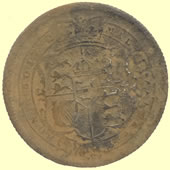 |
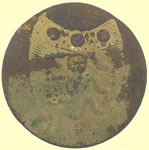 |
 |
|||||||
| 1816 George III milled silver shilling forgery | 18thC Royal Artillery button | 19thC livery button | |||||||
 |
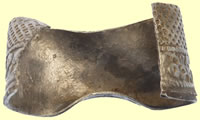 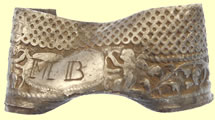 |
||||||||
|
Georgian monogrammed silver open topped thimble | ||||||||
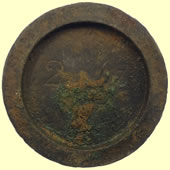 |
 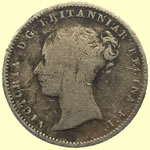 |
||||||||
| Victorian 2oz trade weight | 1849 Victoria milled silver four pence | ||||||||
1351-2 Edward III hammered silver groat - Cross 1 - 9 arches to tressure Obv +EDWARD Do Go REX ANGL z FRANC D o hYB Rev CIVI/TAS/LON/DON - London mint mark |
|||||||||
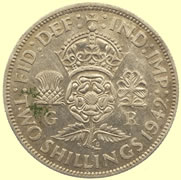 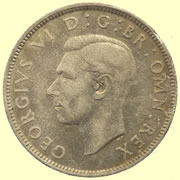 |
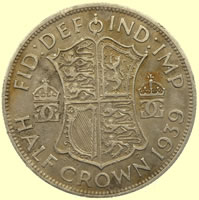 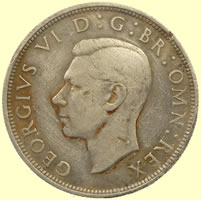 |
||||||||
| 1942 George VI milled silver florin (24 pence) | 1939 George VI milled silver half crown (30 pence) | ||||||||
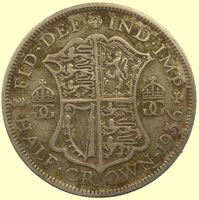 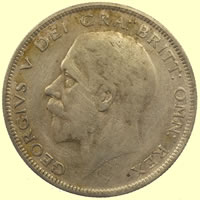 |
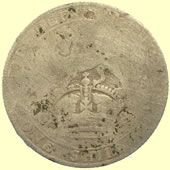 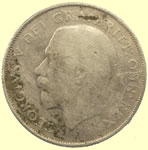 |
||||||||
| 1936 George V milled silver half crown (30 pence) | 1921 George V milled silver six pence | ||||||||
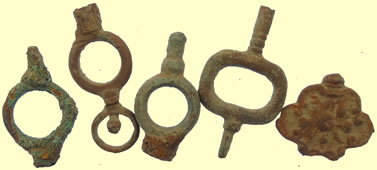 |
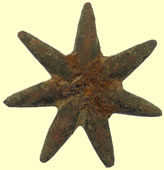 |
||||||||
| Georgian watch winders | Medieval spur rowel | ||||||||
 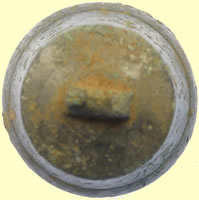 |
  |
||||||||
| Georgian horse bell | Not seen this type of barrel Georgian tap before | ||||||||
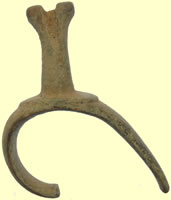 |
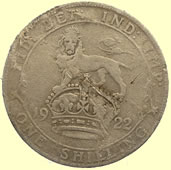 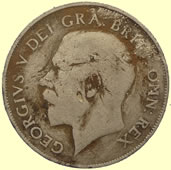 |
||||||||
| Georgian spur | 1922 George V milled silver sixpence | ||||||||
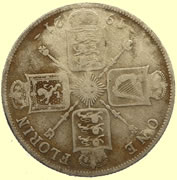 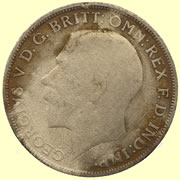 |
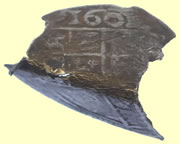 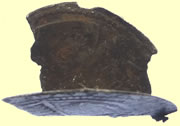 |
||||||||
| 1921 George V milled silver florin (24 pence) | 1602 Elizabeth 1st hammered silver sixpence | ||||||||
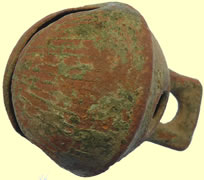 |
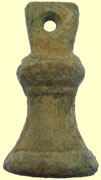 |
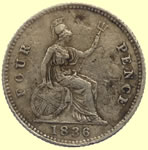  |
|||||||
| 18thC crotal bell | Georgian bell trade weight | 1836 William IV milled silver four pence | |||||||
 |
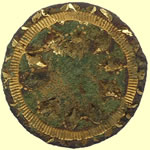 |
  |
|||||||
| Georgian leg type pipe tamper | Georgian button | 1819 Russian lead bale seal | |||||||
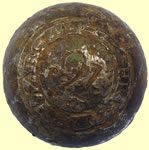 |
|||||||||
97th Regiment of foot button Prior to 1800, three unconnected Foot Regiments bore the identification number of 97th Foot. The first 97th Regiment of Foot was raised in c1760 and disbanded in 1763. A second regiment was raised in 1780 under Colonel Samuel Stanton and disbanded in 1783. A third 97th Regiment of Foot was formed in 1794 under Sir James Grant, and disbanded in 1796.
In 1805, a new 97th Foot was formed from the Queen's German Regiment (or Queen's German Infantry; originally formed in 1798 as the Minorca Regiment).
In 1816 this 97th Foot Regiment was renumbered the 96th Foot (thus replacing the existing 96th Foot which, also in 1816, was renumbered 95th).
In 1816 when the existing 97th Regiment of Foot was renumbered 96th Foot, the 98th Regiment of Foot was renumbered 97th Foot before being disbanded in 1818.
In 1824, another 97th Foot was formed: the 97th (The Earl of Ulster's) Regiment of Foot. This continued until 1881 when this regiment was linked to the 50th (Queen's Own) Regiment of Foot to form The Queen's Own Royal West Kent Regiment.
|
|||||||||
  |
 |
||||||||
| 20thC Fairy charm | Medieval rivet bucket handle | ||||||||
 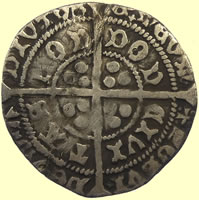 |
|||||||||
1471-83 Edward VII hammered silver gorat - Cross and 4 pellets initial mark - Trefoils in all cusps- Gb crown Groat of type XVI Obv +EDWARD'DEI GRA **** Rev CIVI/TAS/LON/DON - London mint mark |
|||||||||
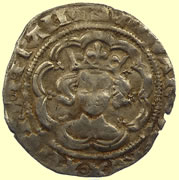 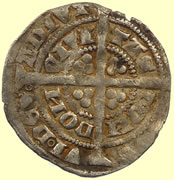 |
 |
 |
|||||||
1351 Edward III hammered silver half groat Pre Treaty series No lis above crown - 9 tressures - Lis on cusps - C and E closed- Annulet stops - N reversed +EDWARDVS REX ANGL: Z FRANC Rev CIVI/TAS/LON/DON - London mint mark |
15thC lead token | Georgian watch winder | |||||||
600AD Saxon silver sceat - sent to EMC for ID and recording 1.13g, 11mm
|
|||||||||
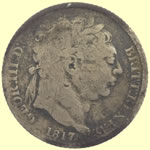 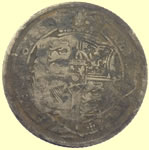 |
 |
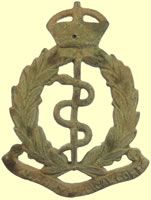 |
|||||||
| 1817 George III milled silver sixpence | 18thC Royal Navy button | WII Army medical Corp badge | |||||||
 |
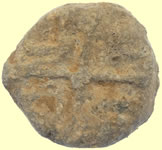 |
 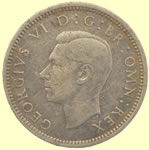 |
|||||||
| 1500-1650 buckle | 15thC lead token | 1946 George VI milled silver sixpence | |||||||
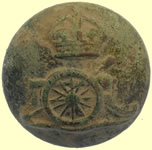 |
 |
  |
|||||||
| WWII Royal Artillery button | 17thC lead token | Taco'd Post medieval hammered silver penny | |||||||
1820 George IV milled silver half crown (30 pence) |
|||||||||
  |
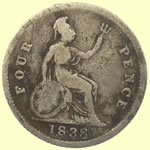 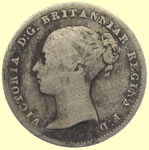 |
||||||||
| 18thC bullion cup weight | 1838 Victoria milled silver four pence | ||||||||
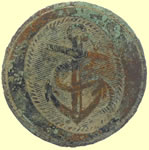 |
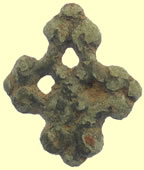 |
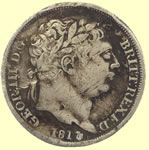 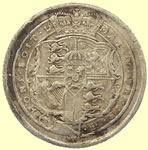 |
|||||||
RN Capt / Commander - 1787 |
Medieval mount with two integral lugs | 1816 George III milled silver sixpence | |||||||
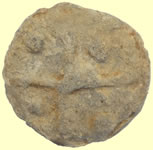 |
 |
  |
|||||||
| 15thC lead token | Georgian advertising watch winder | Medeival lead mount | |||||||
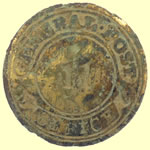 |
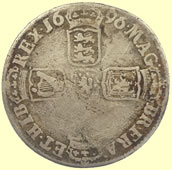 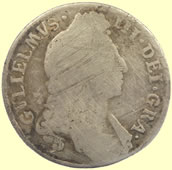 |
||||||||
This is not the usual Victorian GPO button - Can anyone ID it ? General Post Office No11 button |
1696 William III milled silver shilling (12 pence) | ||||||||
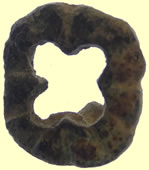 |
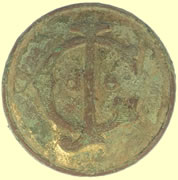 |
 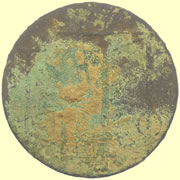 |
|||||||
| Medieval mount with two integral lugs | 19thC livery button | 1792 Norfolk Norwich Halfpenny Condor Token OBVERSE: Shield of arms of the city of Norwich, castle with lion below. 1 7 9 2 REVERSE: A man working in a loom with bobbin winder; quite detailed. EDGE: JOHN HARVEY OF NORWICH .XXXX. | |||||||
 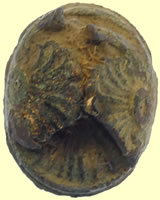 |
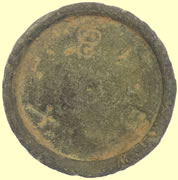 |
 |
|||||||
| Georgian fob seal matrix | George 1st trade weight - Crown G London | Georgian watch winder | |||||||
 |
 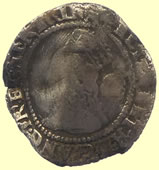 |
||||||||
| WWII Royal Air force badge | 1578 - 1579 Elizabeth 1st hammered silver half groat - Greek cross mint mark | ||||||||
 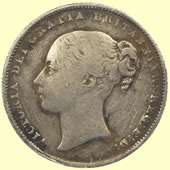 |
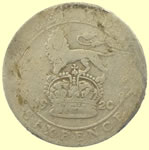 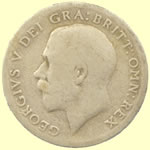 |
||||||||
| 1864 Victoria milled silver shilling ( 12 pence) | 1920 George V milled silver sixpence | ||||||||
 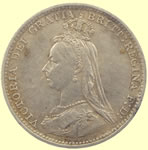 |
 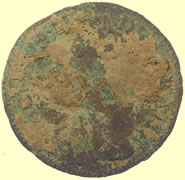 |
||||||||
| 1889 Victoria milled silver three pence | 1689 James II gunmetal coinage - shilling (12 pence) | ||||||||
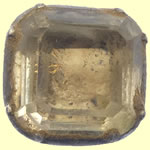 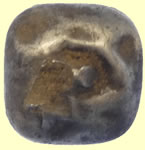 |
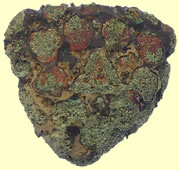  |
||||||||
| Georgian silver button with glass stone | Medieval mount | ||||||||
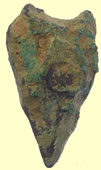 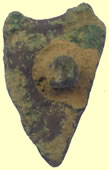 |
  |
||||||||
| Medieval mount | 1580 Elizabeth 1st hammered silver six pence | ||||||||
 |
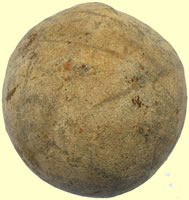 |
||||||||
| Little and large 18thC crotal bells | 16thC stone cannon ball | ||||||||
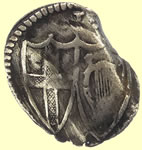 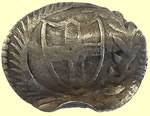 |
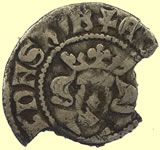  |
||||||||
| 1649 Commonwealth hammered silver penny | 1279 Edward 1st hammered silver penny Obv +ED***DNS hYB |
||||||||
 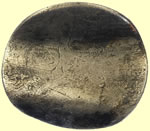 |
|
||||||||
| 1696 Willaim III milled silver sixpence - love token | Georgian silver band - Maker IR | ||||||||
 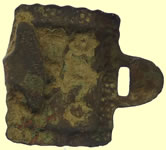 |
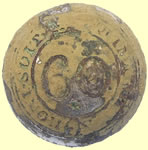 |
||||||||
| 18thC clog fastener | 60th Regiment of Foot ( Royal American ) An officers example to the 60th, known as the 60th Royal American Regt of Foot from 1757-1815, then Royal American LI 1815-1824, before becoming Duke of York's Own Rifle Corps and then the KRRC 1830-81. Description: Crowned 60 within strap reading HONI SOIT QUI MAL Y PENSE. Category: Regular Army; Type of button: Convex 20mm ; Metal: Copper Alloy silvered; Backmark: None Date: c1785-1800
|
||||||||
 |
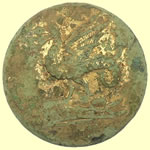 |
 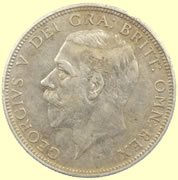 |
|||||||
| 19thC livery button | 19thC livery button | 1928 George V milled silver florin (24 pence) | |||||||
1603 James 1st hammered silver sixpence -Thistle mint mark |
|||||||||
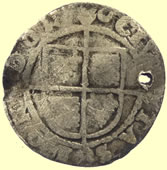  |
  |
||||||||
| 1587-9 Elizabeth 1st hammered silver half groat-Crescent mint mark | 1195 Scottish William 1 The Lion hammered silver half penny | ||||||||
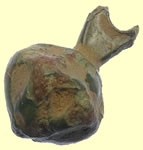 |
 |
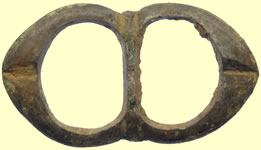 |
|||||||
| 16thC Tudor button | Georgian buckle | 1500-1650 buckle | |||||||
 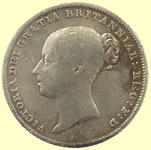 |
  |
||||||||
| 1853 Victoria milled silver sixpence | Unknown Eagle button Firmin and Son London 153 Strand London |
||||||||
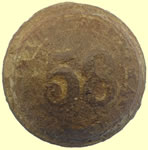 |
 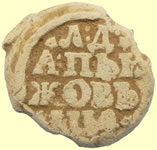 |
||||||||
58th (Rutlandshire) The 58th (Rutlandshire) Regiment of Foot was a British Army line infantry regiment, raised in 1755. Under the Childers Reforms it amalgamated with the 48th (Northamptonshire) Regiment of Foot to form the Northamptonshire Regiment in 1881 |
1831 Russian lead bale seal | ||||||||
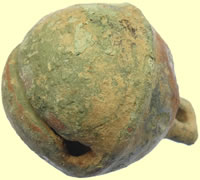 |
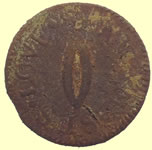 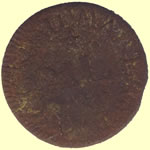 |
||||||||
| 18thC crotal bell | 17thC hammered copper trade farthing | ||||||||
Riveted copper handle |
|||||||||
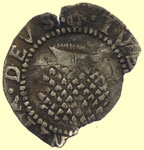 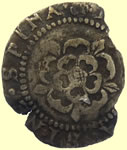 |
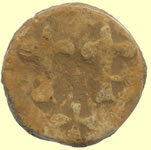 |
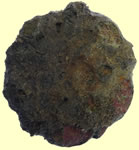 |
|||||||
| 1605-6 James 1st hammered silver penny- Rose mint mark | Medieval lead trade weight | 1500-100 mount | |||||||
 |
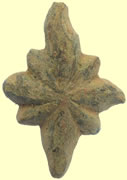 |
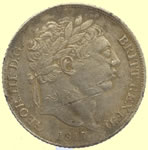 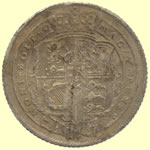 |
|||||||
| 18thC clog fastener | 1500-1700 mount | 1817 George III milled silver sixpence | |||||||
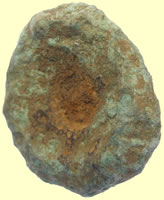  |
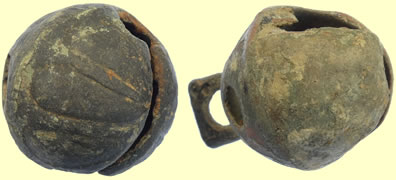 |
||||||||
| Romano/British bronze mount | 18thC crotal bells | ||||||||
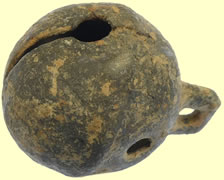 |
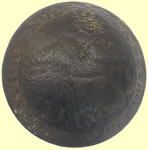 |
||||||||
| 18thC crotal bell | Unrecorded 5th Dragoon guards button Description: Crowned Hannover Horse over V D.G with VESTIGIA NULLA RETRORSUM around. Category: Dragoons Type of button: Slightly Convex; Metal: Copper Alloy, silver gilded. Backmark: ; Date: c1780-1796 Crimera war period The 5th Dragoons became Princess Charlotte of Wales's Dragoon Guards in 1804. |
||||||||
1344-51 Edward III hammered gold qtr nobel - Standard C type Obv +EDWAR D G R EX ANGL Z *** hYB - E at centre on obverse -satire stops Rev: + EXALTABITUR IN GLORIA I Obv shield quartered with the arms of England and France within a tressure of six arches (early coin) 2.04g,20mm |
|||||||||
Victorian gold ring - Maker KB & P 1.03g, 17mm
|
|||||||||
1351 1361 Edward III hammered silver groat - Fourth coinage Pre Treaty period Obv + EDWARD DG o ANGL o Z o FRANC D h: Y : B : Closed letter E type 2 9 tressures Rev CIVI/TAS/LON/DON - London mint |
|||||||||
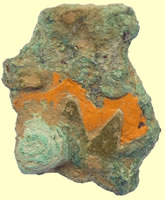 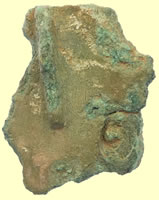 |
 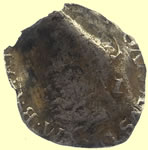 |
||||||||
| 2ndC Roman enamelled disc brooch | 1625 Charles 1st hammered silver penny | ||||||||
 |
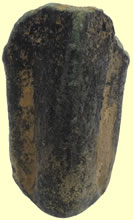 |
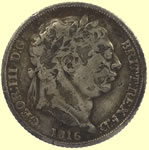 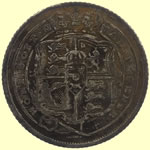 |
|||||||
| 18thC crotal bell | Medieval bronze pot foot | 1816 George III milled silver sixpence | |||||||
1788 silver spoon - London hall mark - Maker SG - Duty paid symbol Samuel Godbehere & Edward Wigan 1787..1800 |
|||||||||
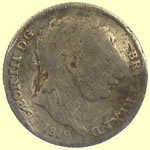  |
  |
||||||||
| 1819 George III milled silver sixpence | 1891 Old Bust Victorian milled silver shilling (12 pence) | ||||||||
 |
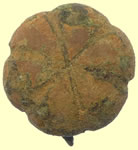 |
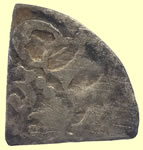 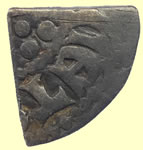 |
|||||||
RN Capt / Commander - 1787 |
Medieval sexfoil mount | 1247 Henry III hammered silver voided long cross farthing | |||||||
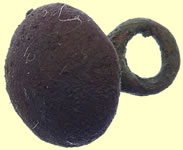 |
  |
||||||||
| 16thC Tudor button | 1474 -1504 Seville, Spain, 1/2 real, Ferdinand-Isabel, mintmark S plus Obv + RCx.C.T:REE.WA.CRST.CSIO Rev RELISH + FERN*****NIS:ET. |
||||||||
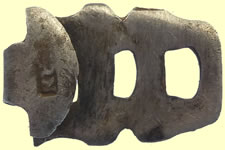 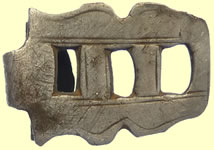 |
 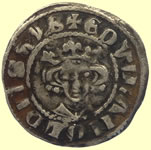 |
||||||||
1760's silver clog fastener - unknown maker RN |
1299- 1300 Edward 1st hammered silver penny - Class 9a2, open E & C - Star on breast, Unbarred N Obv + EDWAR ANGL DNS hYB Rev CIVI/TAS/LON/DON - London mint |
||||||||
 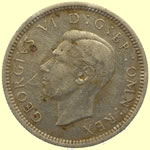 |
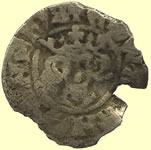 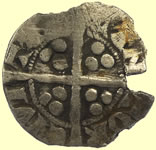 |
||||||||
| 1943 George VI milled silver sixpence | 1279 Edward 2st hammered silver penny +EDWA**ANGL DNS hYB Rev CIVI/TAS/CAN/TOR - Canterbury mint |
||||||||
 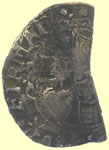 |
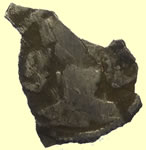  |
||||||||
| 1625 Cahrles 1st hammered silver penny | Medieval hammered silver long cross penny - Quadrefoil with pellet at centre of reverse cross - York mint | ||||||||
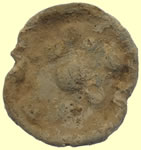 |
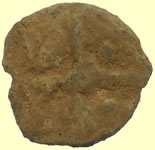 |
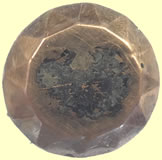 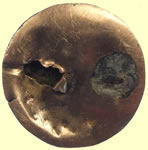 |
|||||||
| 15thC lead token | 15thC lead token | Victorian gold button | |||||||
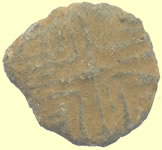 |
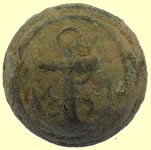 |
  |
|||||||
| 17thC lead token | Capt / Commander - 1774-1787 RN Master & Mate - 1787-1807 RN Surgeon - 1787-1805 RN Purser - 1787-1807 |
1772 Georgian coin weight - 10 sillings and six pence - half gold guinea | |||||||
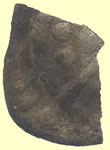 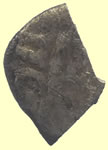 |
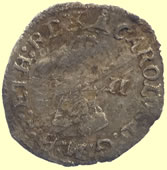  |
||||||||
| Medieval hammered silver long cross penny fragment | 1634-5 Charles 1st hammered silver half groat - Bell mint mark | ||||||||
 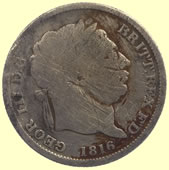 |
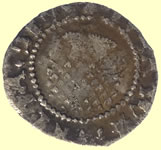  |
||||||||
| 1816 George III milled silver shilling (12 pence) | 1603 James 1st hammered silver penny | ||||||||
 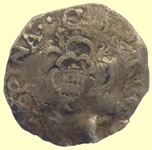 |
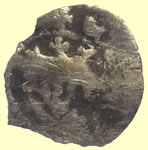 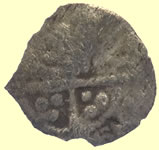 |
||||||||
Rose each side with legend and no inner circles. 1625 Charles 1st hammered silver penny |
1279 Edward 1st hammered silver long cross farthing - inner circles both sides | ||||||||
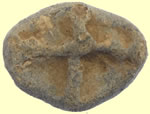 |
 |
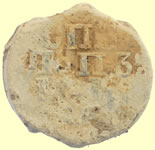 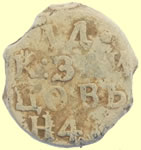 |
|||||||
| Medieval lead gaming token | 15thC lead token - type 2 | 19thC Russian lead bale seal | |||||||
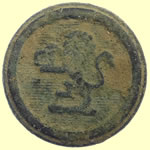 |
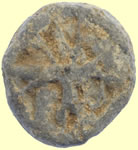 |
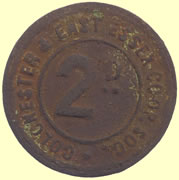 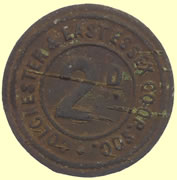 |
|||||||
| Honourable East India Company button | 17thC lead token | Victorian East England Co-op Society - 2 pence token | |||||||
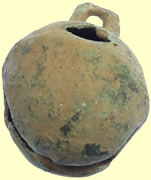 |
 |
 |
|||||||
| 18thC crotal bell | Victorian silver thimble | Medieval apostle spoon handle | |||||||
1308-12 Henry VII King of the Romans - Henry of Luxemburg Obv +:hENRICV eagle S:DEI:GRA Rev ROM/ANO/RVM REX eagle |
|||||||||
| From the end of the 12th century, the English penny, known for it's good silver, became a standard in north-west Europe. Merchants in the Low Countries (especially Flanders, Brabant, Hainaut) went to England to buy the high quality wool and paid with English pennies. To get them they exchanged silver bars and/or light weighted coins in English coin work shops. To avoid exchange rates and increase profits, they soon started minting their own copies. In the same alloy and weight but also in baser material to earn more money. As the majority of the medieval population could not read, it was no problem if the legends were not correct or with the name of the local count and mint. If it looks correct, it must be correct! |
|||||||||
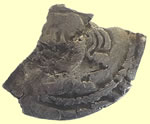 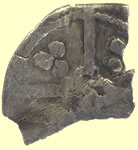 |
 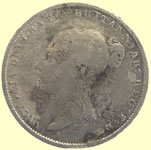 |
||||||||
| Medieval hammered silver penny - Quadrefoil with pellet at centre of reverse cross - York mint | 1844 Victoria milled silver sixpence | ||||||||
|
 |
||||||||
| Post medieval pin | Victorian belt buckle HONI SOIT QUI MAN Y PENSE Honi soit qui mal y pense (Old French: shame upon him who thinks evil of it) |
||||||||
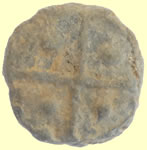 |
 |
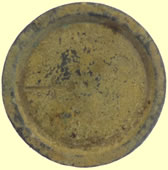 |
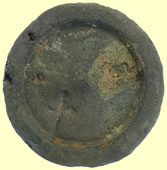 |
||||||
| 15thC lead token | Georgian watch winder | Georgian trade weight | Georgian trade weight | ||||||
 |
|
||||||||
1930's 'I am a Cococub badge' I am a Cococub badge. The Cococub league was a children's club run by Cadbury's in the 1930's. It ceased at the begining of the Second World War and was revived for a short period in the 1950's. Note the hole at bottom of badge this was for children who had a higher level of membership and who were awarded an additional attachment which could be displayed from the bottom of the badge. |
Man holding a cricket bat 'Steady hand' clasp |
||||||||
 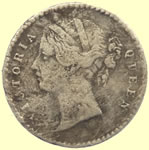 |
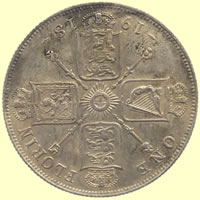 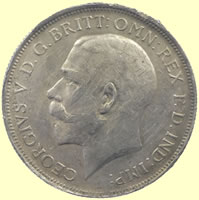 |
||||||||
| 1841 Indian Victoria milled silver 2 annas | 1918 George V milled silver florin (24 pence) | ||||||||
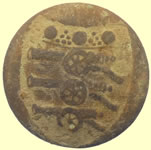 |
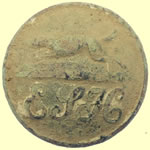 |
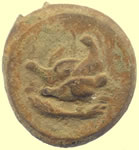 |
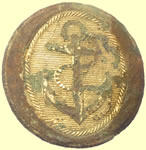 |
||||||
| 18thC Royal Artillery button | 19thC livery button | 19thC hunting button | RN Capt / Commander - 1787 |
||||||
 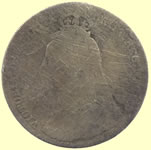 |
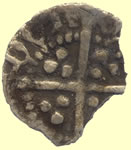  |
||||||||
| 19thC Victoria milled silver sixpence | 1413 - 22 Henry V hammered silver farthing Mullet and Annulet by hair Rev /DON - London mint |
||||||||
 |
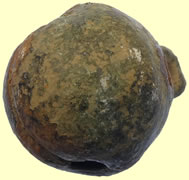 |
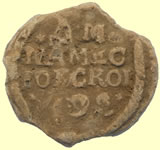  |
|||||||
| Victorian Royal London Yacht Club button | 18thC crotal bell | 1778 Russian lead bale seal | |||||||
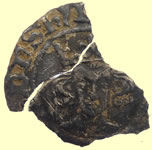 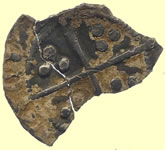 |
 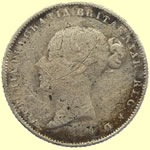 |
||||||||
1279 Edwars 1st hammered silver long cross penny Obv **DNS hYB |
1843 Victoria milled silver sixpence | ||||||||
 |
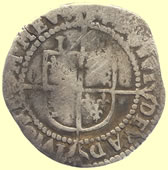 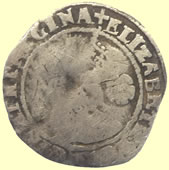 |
||||||||
| 16thC Tudor S buckle | 1578 - 1579 Elizabeth 1st hammered silver half groat - Greek cross mint mark | ||||||||
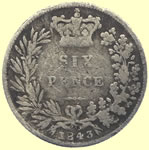 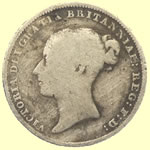 |
|
||||||||
| 1843 Victoria milled silver sixpence | Medieval gilded mount | ||||||||
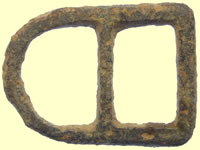 |
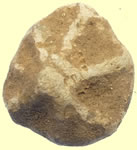 |
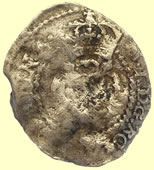 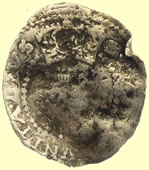 |
|||||||
| 1500-1700 buckle | Medieval lead gaming token | 1603 James 1st hammered silver half groat | |||||||
 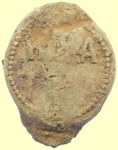 |
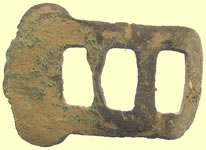 |
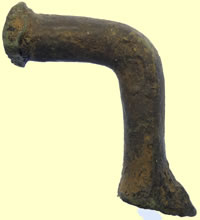 |
|||||||
| Post medieval Dutch lead bale seal | 18thC clog fastener | Medeival bronze pot leg | |||||||
Roman bronze buckle |
|||||||||
Medieval handle |
|||||||||
Back scratcher ?? |
|||||||||
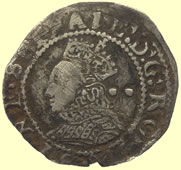 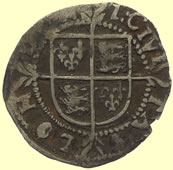 |
 |
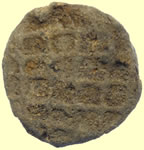 |
|||||||
| 1601 - 1602 Elizabeth 1st hammered silver half groat - 1 mint mark | 17thC lead token | 17thC lead token | |||||||
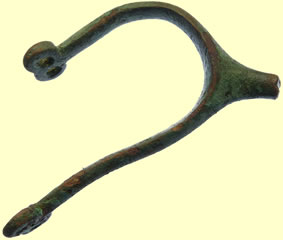 |
 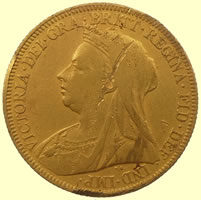 |
||||||||
| Georgian spur | 1894 Victoria milled gold sovereign 22mm,7.95g |
||||||||
Gold ring - 20mm,1.45g Makers mark SC |
|||||||||
Gold ring 1.46g,14mm |
|||||||||
1422- 27 Henry VI hammered silver groat - Annulet issue - IM pierced cross Annulets by neck, Annulets in opposing quadrants in reverse Obv +hENRIC x DI GRA x REX x ANGL xZx FRANC' Rev VIL/LAx/CALI/SIEx - Calais Mint Rev outer - POSVI DEVM ADIVTORE MEVM
|
|||||||||
1422- 27 Henry VI hammered silver groat - Annulet issue - IM pierced cross Annulets by neck, Annulets in opposing quadrants in reverse Obv +hENRIC x DI GRA x REX x ANGL xZx FRANC' Rev VIL/LAx/CALI/SIEx - Calais Mint Rev outer - POSVI DEVM ADIVTORE MEVM |
|||||||||
1422- 27 Henry VI hammered silver groat - Annulet issue - IM pierced cross Annulets by neck, Annulets in opposing quadrants in reverse Obv +hENRIC x DI GRA x REX x ANGL xZx FRANC' Rev VIL/LAx/CALI/SIEx - Calais Mint Rev outer - POSVI DEVM ADIVTORE MEVM |
|||||||||
1351- 1361 Edward III hammered silver groat (4 pence ) - Cross 3 Pre treaty period annulet stops Obv EDWAR **** ANGL o Z o FRANC o D o hYB Rev CIVI/TAS/LON/DON - London mint |
|||||||||
1351- 1361 Edward III hammered silver groat (4 pence ) - Cross 3 Pre treaty period annulet stops Obv EDWAR **** ***** C o D o hY o B Rev CIVI/TAS/LON/DON - London mint |
|||||||||
1327 Edward III hammered silver groat (4 pence ) -annulet stops Obv ***** D G **** Rev CIVI/TAS/LON/DON - London mint |
|||||||||
Georgian Madonna of Pompei silver framed enameled pendant |
|||||||||
Huge lead seal - Victoria - queens crown OZ - Ounces ? *BROM **CH DMXSI 2.8 Oz, 47mm dia |
|||||||||
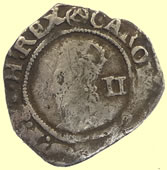 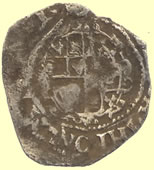 |
 |
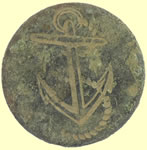 |
|||||||
| 1639-40 Charles 1st hammered silver half groat - triangle in circle mint mark | One piece Navy buttons HONI SOIT QUI MAN Y PENSE PACKET Honi soit qui mal y pense (Old French: shame upon him who thinks evil of it) RN - Packet Service ( Mail & Supplies Delivery ) c.1800-1811 Firmin & Co RN - Packet Service | Britain - Canada |
|||||||
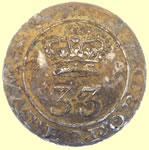 |
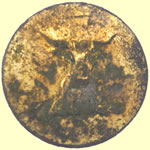 |
 |
|||||||
THE 33RD REGIMENT OF FOOT. / After 1881 :- 1st Battalion The Duke Of Wellington's (West Riding) Regiment Waterford Militia Between 1793 and 1815 the 33rd Light Infantry Regiment assembled in Waterford for a month’s training each year with the reservists being paid over this period. The concept was simple if there was a landing by a foreign force these men could be called upon to defend the country. Following the defeat of France in the Napoleonic wars this threat diminished and the militia was disbanded. |
19thC livery button | 17thC lead token | |||||||
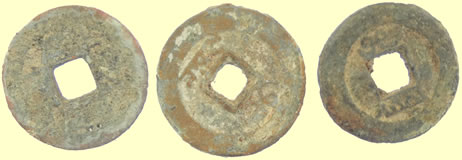 |
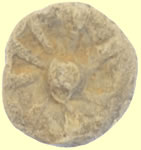 |
||||||||
| 3- 19thC Chinese cash coins | 17thC lead token | ||||||||
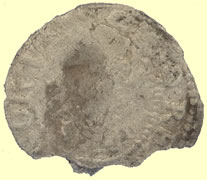 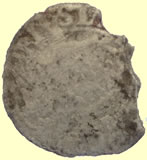 |
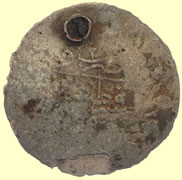 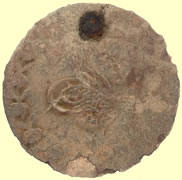 |
||||||||
| Continental billion hammered silver coin | 19thC Ottoman empire silver coin | ||||||||
  |
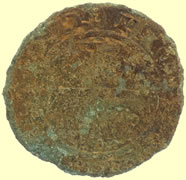 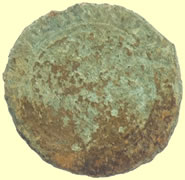 |
||||||||
| Georgian bell trade weight | 14th C French jetton | ||||||||
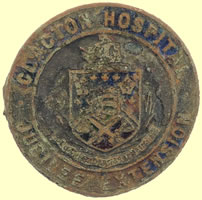 |
 |
||||||||
| Clacton Hospital Jubilee extension funraising badge | 20thC figure mount | ||||||||
  |
 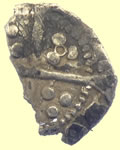 |
||||||||
1485-1509 Henry VII hammered silver halfpenny - arrow mint mark- single arched crown - brush hair Obv h****A Rev CIVI/TAS/LON/DON - London mint |
1327 Edward III hammered silver half penny | ||||||||
 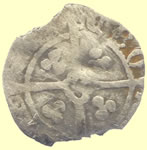 |
|
||||||||
1413 - 22 Henry V hammered silver penny- mullet and annulet by crown Quadrefoil at centre of reverse cross Rev CIVI/TAS/EBO/RACI - York mint |
1911 Chester hall mark silver brooch | ||||||||
 |
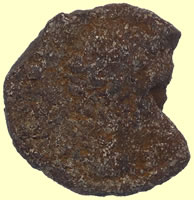  |
||||||||
| 18thC toy cannon | Crusty Roman silver coin - needs 'cooking' to remove crust | ||||||||
 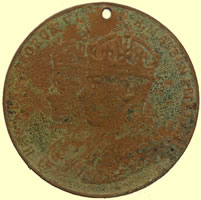 |
  |
||||||||
| 1937 Coronation of HM George VI and HM Queen Elizabeth medallion | Victorian draw pull | ||||||||
 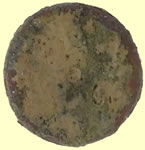 |
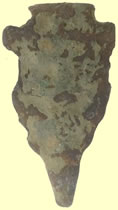 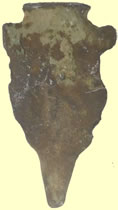 |
||||||||
| 18thC - 2 Dram apothocaries weight | 10thC Saxon stirrup mount | ||||||||
Crusty Roman silver coin ? |
|||||||||
17thC decorated copper ring |
|||||||||
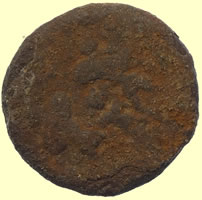 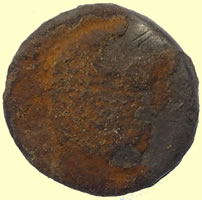 |
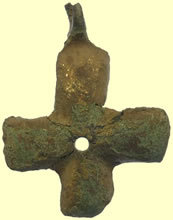 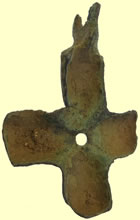 |
||||||||
| Crusty BC Roman silver coin | Medieval gilded harness pendant | ||||||||
 |
|||||||||
| 17thC sword hanger | |||||||||
Sept 2018 Finds pageOct 2018 Finds pageFeb 2019 Finds pageSept 2019 Finds pageOct 2019 Finds pageFeb 2020 Finds page
|
 |
